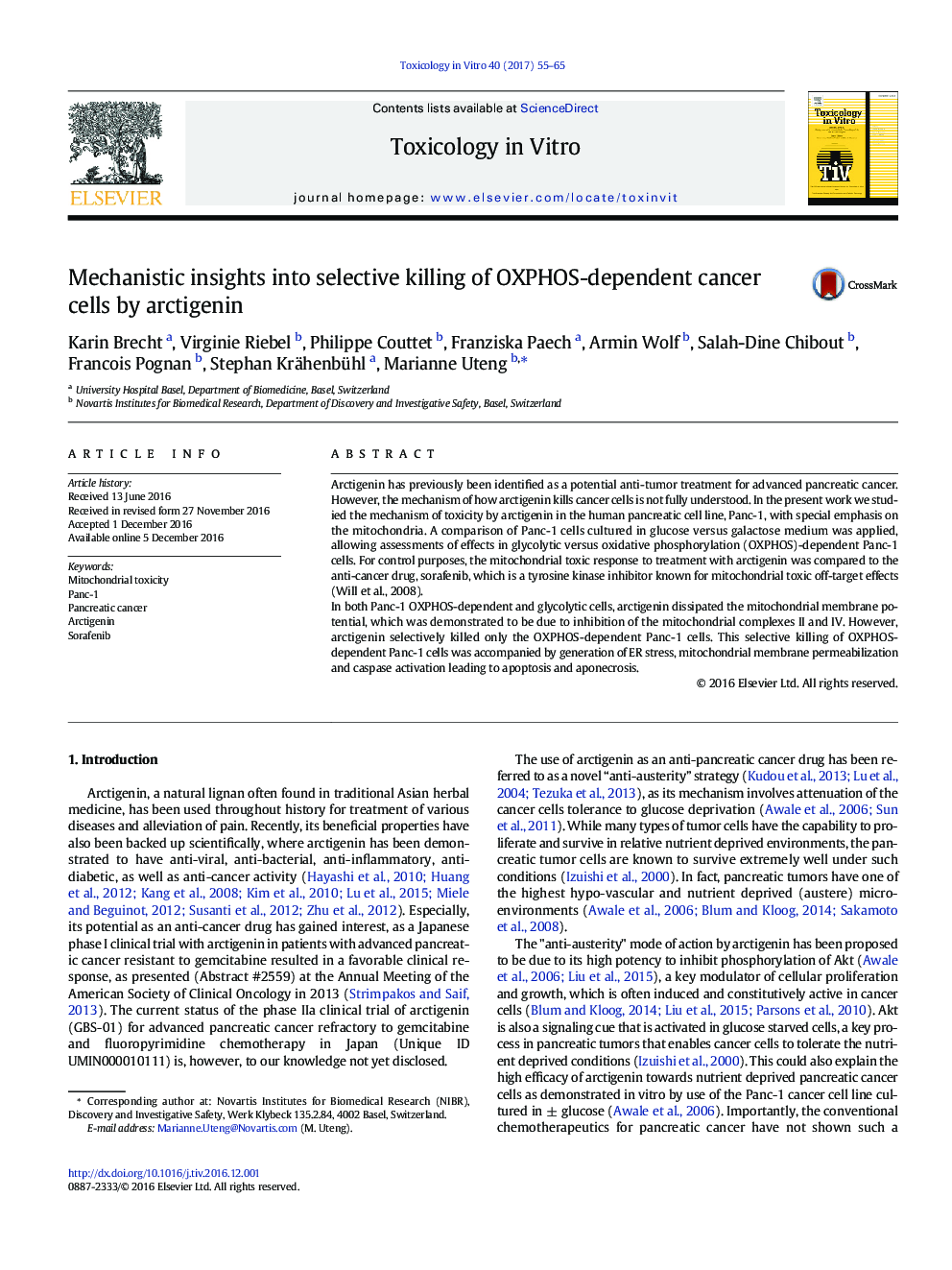| Article ID | Journal | Published Year | Pages | File Type |
|---|---|---|---|---|
| 5562698 | Toxicology in Vitro | 2017 | 11 Pages |
â¢Arctigenin kills OXPHOS-dependent, but not glycolytic Panc-1 cells.â¢Arctigenin inhibits the respiratory complex II and IV in Panc-1 cells.â¢Arctigenin induces dissipation of the MMP and ER stress in Panc-1 cells.â¢Arctigenin induces mitochondrial swelling and apoptosis in OXPHOS Panc-1 cells.
Arctigenin has previously been identified as a potential anti-tumor treatment for advanced pancreatic cancer. However, the mechanism of how arctigenin kills cancer cells is not fully understood. In the present work we studied the mechanism of toxicity by arctigenin in the human pancreatic cell line, Panc-1, with special emphasis on the mitochondria. A comparison of Panc-1 cells cultured in glucose versus galactose medium was applied, allowing assessments of effects in glycolytic versus oxidative phosphorylation (OXPHOS)-dependent Panc-1 cells. For control purposes, the mitochondrial toxic response to treatment with arctigenin was compared to the anti-cancer drug, sorafenib, which is a tyrosine kinase inhibitor known for mitochondrial toxic off-target effects (Will et al., 2008).In both Panc-1 OXPHOS-dependent and glycolytic cells, arctigenin dissipated the mitochondrial membrane potential, which was demonstrated to be due to inhibition of the mitochondrial complexes II and IV. However, arctigenin selectively killed only the OXPHOS-dependent Panc-1 cells. This selective killing of OXPHOS-dependent Panc-1 cells was accompanied by generation of ER stress, mitochondrial membrane permeabilization and caspase activation leading to apoptosis and aponecrosis.
